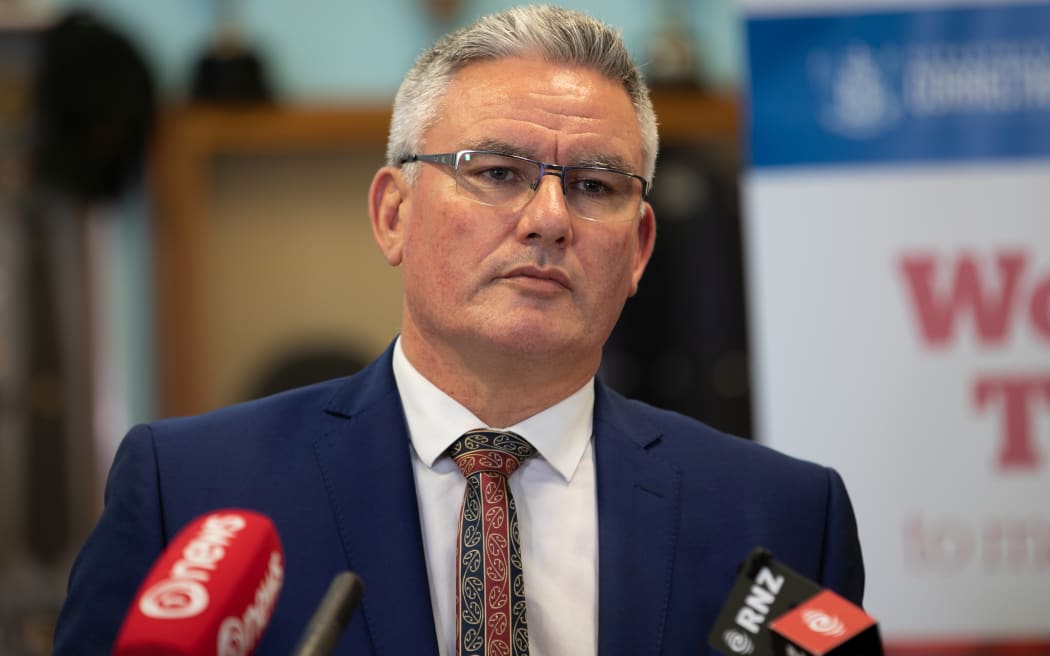The new prison facility to replace the deteriorating jail at Waikeria will cost $750 million to build by 2022, Corrections Minister Kelvin Davis says.
Mr Davis announced today a 500-bed high-security unit and - for the first time in New Zealand - a 100-bed mental health unit would be built at Waikeria instead of the 2000-3000 bed 'mega prison' proposed by the previous National government.
The new prison is set to be built under a Public-Private Partnership, but will be run by Corrections rather than a private provider. Mr Davis said Serco would not be involved at all in the new prison.
While there was potential to expand the prisons, Mr Davis said that defeated Labour's purpose.
"Our ambition is to reduce the prison population by 30 percent over 15 years so we're not looking at expansion plans whatsoever, that would say we've given up before we've even started to implement our solution."
Mr Davis said he was cofident the government had made the right decision to reach their goal of reducing prisoner numbers.
"It's going to cost 750 million in total but this government ... is the first to acknowledge how mental health plays into prison numbers."
The 600 beds total would replace a 100-year-old high-security unit with 426 beds. There is also a 380-bed low-security unit on the site.
The National Party said the mega prison was needed to keep up with the burgeoning prison population, but plans for it were scrapped by the government last month.
That decision came after a Ministry of Justice international comparison found countries with lower overall prison population tended to have smaller, less crowded prisons.
"We've made the right decision, we've drawn a line on the failed prison policies of the past and we're moving in a new direction," Mr Davis said.

Corrections Minister Kelvin Davis at the announcement. Photo: RNZ / Dan Cook
He said the costs, less than that of a mega prison, would cover a range of facilities in addition to setting up more aid for those being released.
"There's a range of things we're doing around improving housing for people who will be released from prison but don't have a suitable address to be, say, parole or bail to.
"The reality is that this is saving the government $250 million that it can spend in other areas."
However, the minister acknowledged the results on prison numbers was not coming anytime soon and said reducing the prison population was the primary focus over other matters around the plans.
"We don't expect the prison population to immediately dip, it's still going to rise but we want to slow the rate of increase ... then we want to it to go down, and go down faster towards the end of those 15 years," he said.
"This is the start and we're not just throwing all our eggs into this one basket and expecting it to be the magic elixir, this is just the start and there will be more things we're going to do over the 14 years.
"What I'm most concerned about is the state of the facility in the end to make sure that it is fit for purpose and that it does have all those facilities that I've outlined, that prisoners are supported ... Those are the most important things rather than who and how it's going to be built."
Half of the cells will be double-bunked, meaning two thirds of the prisoners held at Waikeria will be sharing a cell. Those double bunked cells will be specifically designed for double-bunking.
Despite Labour previously speaking out against double-bunking, Mr Davis said it was an option.
"One of the problems that was going on previously with double-bunking was that the cell size wasn't conducive to double-bunking, it's an option we hope we don't have to use over time but again looking also at keeping the cost for the taxpayer down."
The new prison facilities were expected to be finished by 2022.

